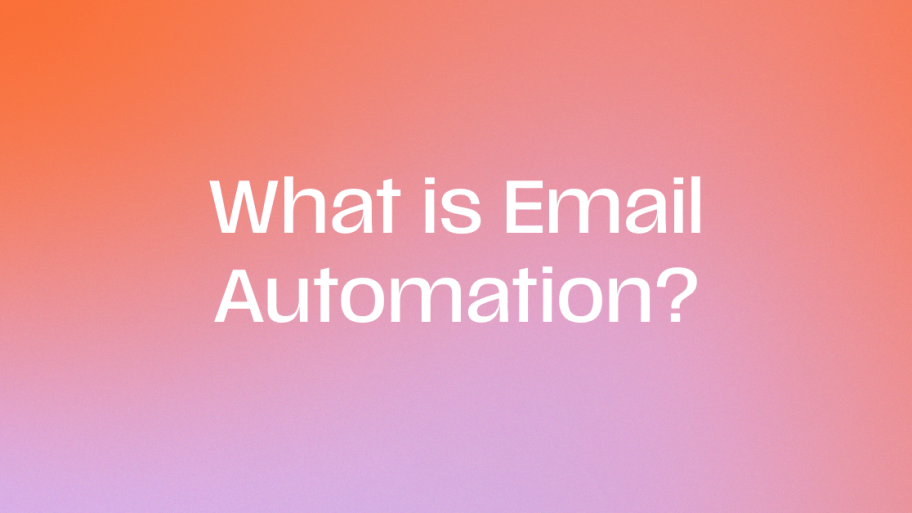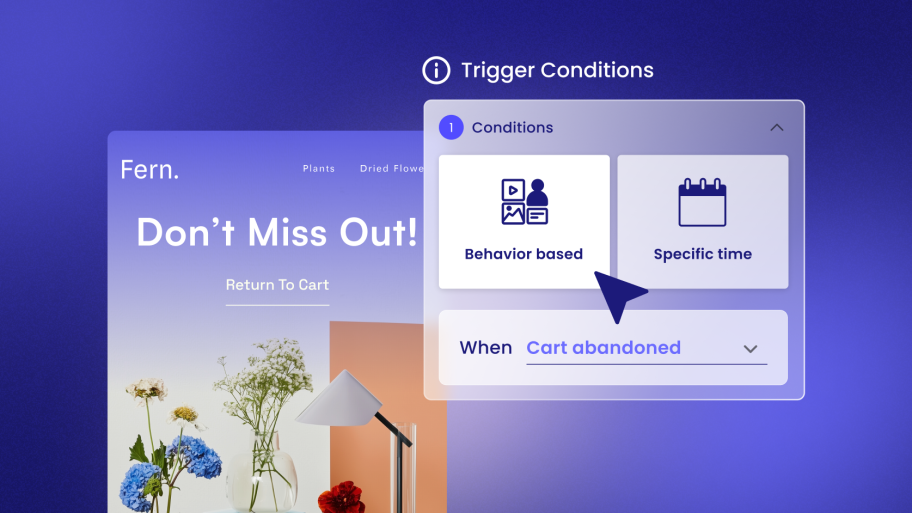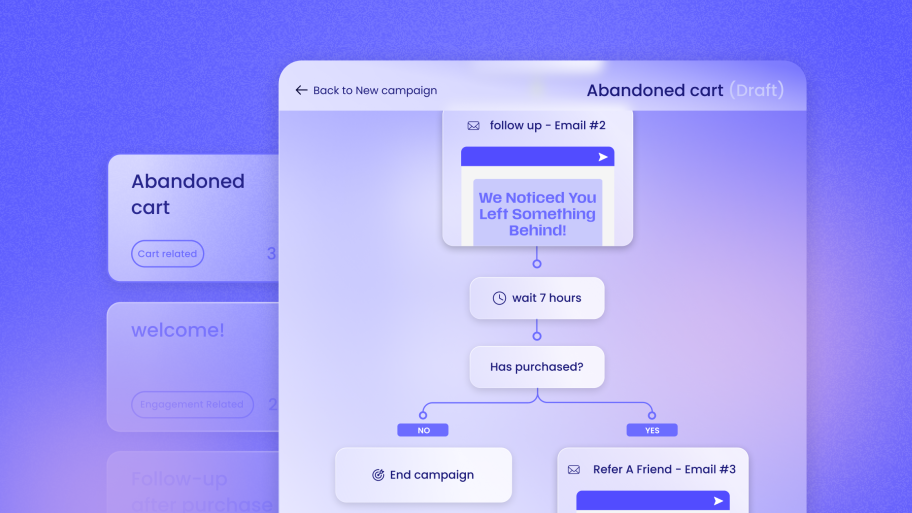That’s right, SMS marketing is a secret weapon that puts your message front and center. Think about it: when was the last time you didn’t read a text? With open rates that blow email out of the water and a speed that no other channel can touch, SMS campaigns can seriously change the game for businesses – big or small.
This guide is your one-stop shop for mastering SMS marketing. We’ll break down seven simple but powerful strategies, from growing your subscriber list to writing messages that pop and even how to slice and dice your audience for maximum impact. Whether you’re a marketing pro or just starting out, these strategies will help you create SMS campaigns that get people talking, boost your sales, and build relationships that last.
Why Texting Works in 2025
SMS marketing (or text message marketing, if you want to be official about it) involves sending promotions straight to your customers’ phones. It’s like having a VIP line in their pocket, perfect for sending quick updates, exclusive deals, and friendly reminders.
But hey, don’t just take my word for it. Studies show that a whopping 98% of SMS messages get opened, compared to a measly 20% for email. That kind of reach, combined with the instant nature of texting, makes SMS marketing a must-have for any business trying to make a splash in our wild digital world.
E-commerce and SMS: A Match Made in Heaven
For those of you selling online, SMS campaigns are a goldmine. First, you can chat with customers in real time, sending them a nudge about that forgotten item in their cart or letting them know about a flash sale the second it starts. That kind of instant connection can be the difference between saying “see ya later” to a sale and gaining a lifelong customer.
Second, SMS campaigns let you get up close and personal. By dividing your audience into groups and tailoring your messages, you can send offers they actually care about and build stronger relationships. Think birthday discounts or a little reminder about something they checked out earlier. You just can’t get that kind of personal touch with other marketing channels.
And SMS campaigns are conversion machines. Studies show that SMS messages have a click-through rate of up to 36% – way higher than email or social media. This means your calls to action are more likely to get noticed and get results, leading to more sales and a healthier bottom line. By adding SMS campaigns to your marketing mix, you can create a customer experience that’s more engaging and personalized, which ultimately means more money in your pocket.
Building a Killer SMS List: Your 7-Step Game Plan
Alright, so we’re all about the power of SMS marketing for e-commerce. Now, let’s get down to brass tacks and explore seven simple strategies that’ll help you crank those results up to eleven. From building a subscriber list that’s bursting at the seams to figuring out what works and what doesn’t, these strategies are your ticket to turning SMS campaigns into a money-making machine.
Strategy 1: Building Your SMS Subscriber List (Because You Need Someone to Text!)
Let’s be real; you can’t send out awesome texts if you don’t have anyone to send them to! This section is all about proven ways to grow your SMS list the right way while keeping things legal and building a loyal following. We’ll also dive into some cool incentives and freebies to get people signing up left and right.
Opt-in Methods: Keywords, Website Forms, and Point of Sale
Growing your SMS list starts with making it easy and tempting for customers to sign up. There are a few ways to do that.
- Keywords: This is a classic. Customers simply text a special keyword to a number, and boom—they’re in! For example, they could text “JOIN” to 12345 to get exclusive deals and updates. It’s easy to remember and promote, and it works like a charm.
- Website Forms: Why not add sign-up forms right on your website? Stick them on your homepage, product pages, or even as pop-ups. Just make sure you clearly explain why joining your SMS list is a good idea. Shout out those exclusive benefits like early access to sales, free shipping, or personalized recommendations.
- Point of Sale: If you have a physical store, this is your chance to shine. During checkout, give customers the option to join your SMS list. Offer offers a little something extra, like a discount on their purchase, to sweeten the deal.
If you’re using a platform like Send, building your SMS list is a breeze. You can whip up keyword campaigns, design eye-catching sign-up forms, and manage all your subscribers in one place. It’s user-friendly and packed with features that make growing your SMS audience a breeze.
Compliance and Regulations: Keeping Things Legal and Above Board
While you’re building that awesome list, it’s super important to play by the rules. In the US, the Telephone Consumer Protection Act (TCPA) has some strict guidelines about sending SMS messages. You need people to give you clear permission to text them, usually through an opt-in form or keyword.
Over in Europe, the General Data Protection Regulation (GDPR) has its own set of rules about collecting personal data, including phone numbers. To stay on the right side of GDPR, you need to be upfront about how you’ll use customer data and get their clear consent before sending any marketing messages.
But beyond the legal stuff, sticking to SMS marketing best practices is just good business. Be honest about how often you’ll be texting, make it easy for people to unsubscribe, and respect their preferences. By doing things the right way, you’ll build trust with your customers and avoid any legal headaches down the road.
Incentives and Lead Magnets: Sweeten the Deal!
Want to turbocharge your SMS list growth? Try offering cool incentives or lead magnets. These could be anything from exclusive discounts and early access to sales to free shipping and personalized recommendations. The trick is to offer something your target audience actually wants.
For example, how about a 10% discount for new SMS subscribers? Or a free downloadable guide related to your products? By offering a little something extra, you’ll get more people to join your SMS party.
Just remember to explain clearly why joining your list is a good idea. Shout out those exclusive benefits and the personalized touch they can expect. Make your SMS list irresistible, and you’ll attract a loyal following of engaged customers who can’t wait to hear from you.
Strategy 2: Writing SMS Messages That People Actually Want to Read
Okay, so you’ve built a solid list of subscribers. High five! Now it’s time to craft some killer SMS messages that grab their attention and get them clicking. This means writing short, snappy copy that your audience actually wants to read. Think brevity, personalization, and a clear call to action.
Brevity and Clarity: Keep it Short and Sweet
In SMS marketing, less is definitely more. You’ve got limited space, so every word counts. Get straight to the point, use simple language that everyone can understand, and ditch the jargon – nobody wants to decode a text message.
Each message should have one clear purpose and a single call to action. Whether you’re shouting about a sale, announcing a hot new product, or sending a friendly reminder, make sure your message is focused and tells people exactly what to do.
For example, instead of saying, “We have a variety of new products available” (snooze!), try “Shop our new arrivals now and get 20% off your first order!” See the difference? It’s shorter, punchier, and way more likely to get people clicking.
Personalization
Personalization is like the secret sauce of SMS marketing. Using the information you have about your customers, you can tailor your messages to their individual tastes and needs. This is a surefire way to boost engagement and get those conversions rolling in.
Use their name, for starters. And don’t stop there! Divide your audience into groups based on what they’ve bought before, their demographics, or their interests. This lets you send messages that are actually relevant to them.
Imagine you’re a clothing store. You could divide your audience by gender and send different messages about men’s and women’s clothes. You could also send personalized recommendations based on what they’ve bought or browsed on your website. This kind of personal touch shows your customers that you get them.
And guess what? With a platform like Send, personalizing your SMS campaigns is a cinch. You can use cool features like dynamic content and segmentation to create targeted messages for different groups and automate personalized messages based on all sorts of triggers. It’s like having a personal texting assistant!
Call to Action
Every SMS message needs a clear and compelling call to action (CTA). This is where you tell your audience exactly what you want them to do after they read your message. Whether it’s visiting your website, making a purchase, or using a coupon, your CTA should be specific, measurable, achievable, relevant, and time-bound (SMART).
Use strong verbs and create a sense of urgency to encourage people to take action right away. For example, instead of a boring “Check out our new collection,” try “Shop the new collection now and get free shipping for a limited time!” See how much more exciting that is?
When you’re writing your CTA, think about the big picture. What’s the main goal of your SMS campaign? Are you trying to get people to your website, generate leads, or promote a specific product? Make sure your CTA matches your goals and makes it easy for people to do what you want them to do. Give them a clear link or instructions to guide them.
Strategy 3: Segmenting Your Audience – Because One Size Doesn’t Fit All
Segmentation is a fancy word for dividing your audience into smaller groups based on what they have in common. This allows you to send messages that are more targeted and relevant, which means more people will actually read them and take action.
Segmentation Criteria: Demographics, Purchase History, and Behavior
There are many ways to segment your SMS audience. Demographics like age, gender, and location can be super useful for tailoring your messages. For example, a clothing store might segment its audience by gender to promote the right clothes.
Purchase history is another goldmine. You can target people who have bought certain products in the past and recommend similar items or offer them exclusive discounts on their favorites. You can also segment your audience based on what they do on your website, like the pages they visit, the products they look at, or the items they leave in their cart.
For example, if someone abandons their cart, you can send them a quick text to remind them about those forgotten goodies and offer a little incentive to complete their purchase. By segmenting your audience based on their behavior, you can send messages that are relevant to their needs and interests. It’s like you’re reading their minds!
Creating Dynamic Segments in Send
Send makes it super easy to create dynamic segments that automatically update based on rules and conditions you set. This means you can effortlessly target specific customer groups without lifting a finger to update your lists manually.
Here’s the play-by-play:
- Head over to the “Audiences” tab in Send and select “Create Segment.”
- Choose “Dynamic Segment” and set up the rules and conditions for your segment.
For example, you could create a segment of customers who’ve made a purchase in the last 30 days or those who left items in their cart in the last 24 hours. You can even combine different criteria to create laser-focused segments.
Once you’ve set up your segment, give it a meaningful name and save it. You can then use this segment to send targeted SMS campaigns to the right people at the right time. Boom!
Targeted Campaigns for Each Segment:
Now that you’ve divided your audience into neat little groups, it’s time to create targeted campaigns for each one. This means tailoring your messages to their specific needs and interests. Think of it like this:
- New subscribers: Welcome them with open arms! Offer a discount on their first order, like “Welcome to the crew! Get 15% off your first order with code WELCOME15.”
- Loyal customers: Show them some love with a birthday discount or exclusive offer. Something like, “Happy birthday, [customer name]! Enjoy a special 20% discount on your next purchase.”
- Abandoned cart: Nudge them to complete their purchase with a friendly reminder and maybe free shipping. “Did you forget something? Complete your purchase now and get free shipping on your order.”
Personalizing your messages will get more people reading and clicking. Use your customers’ names, mention their past purchases, or recommend products based on what they’ve browsed on your site. This shows your customers that you care about what they want.
Strategy 4: Timing is Everything
When it comes to SMS marketing, timing is key. Sending your messages at the right time can make a huge difference in how many people open them, click on your links, and ultimately buy your stuff.
Optimal Send Times
Research shows that certain days and times work better for sending SMS messages. Generally, weekdays between 10 a.m. and 8 p.m. are the sweet spot. But the best time to send might be different depending on your target audience and what you’re selling.
For example, if you’re trying to reach busy professionals, sending messages during their lunch break or commute might be a good idea. If you’re targeting students, evenings or weekends might be better. The key is to experiment a bit and see what works best for your audience.
Time Zone Considerations
If you have customers all over the place, remember those pesky time zones! You don’t want to be blasting out promotional texts in the middle of the night.
Luckily, Send has some handy time zone features that let you schedule your messages based on where your customers are located. This way, your messages always arrive at a decent hour, no matter where people are.
Triggered Campaigns
Triggered campaigns are automated messages that are sent based on specific customer actions or events. They allow you to send timely and relevant messages at just the right moment.
For example, you can send an abandoned cart reminder when someone leaves items in their cart or a post-purchase follow-up to thank them for their order and offer a discount on their next purchase.
Triggered campaigns are a fantastic way to personalize your SMS game and guide customers through their buying journey. They also save you time and effort by automating those messages.
Strategy 5: SMS Teamwork
SMS marketing isn’t meant to be a lone wolf. To really make it shine, you need to bring it together with your other marketing channels. This creates a smoother experience for your customers and lets you reach them in different ways.
SMS and Email Marketing
Think of SMS and email marketing as two peas in a pod. They work best when they’re together, supporting your overall marketing strategy. SMS is awesome for those quick updates, exclusive deals, and timely reminders, while email is better for longer content and building relationships.
SMS can send short and sweet messages, while email can deliver newsletters, product announcements, and personalized recommendations. For example, you could send a quick text about a flash sale with a link to your website and then follow up with an email that gives more details about the sale and showcases some featured products.
By combining SMS and email, you can reach your audience at different points in their buying journey and create a more complete experience. This tag-team approach can lead to more engagement, more sales, and happier, more loyal customers.
Omnichannel Marketing with Send
Send is like your marketing command center. It lets you create a true omnichannel strategy by seamlessly blending SMS with other channels like email, push notifications, and even social media. This means you can create personalized messages across all your channels and make sure your brand looks and feels the same everywhere.
For example, let’s say someone abandons their cart on your website. You could use Send to trigger an SMS message right away, followed by an email reminder a few hours later. If they still need to finish their purchase, you could send a push notification with a special offer. This multi-channel approach makes sure your message gets seen and (hopefully!) acted upon.
Send’s automation features make it a breeze to create complex workflows that connect all your marketing channels. This lets you deliver a seamless and personalized experience that keeps customers engaged and coming back for more.
Building a Consistent Brand Experience
When you’re using SMS with other marketing channels, it’s important to keep your brand consistent. This means using the same brand voice, tone, and messaging across all platforms. Your customers should have a unified experience with your brand, no matter how they interact with you.
Make sure your SMS messages match your overall brand identity and work well with your other marketing efforts. Use consistent visuals, language, and calls to action across all channels. This creates a sense of familiarity and trust, which is good news for your brand reputation.
For example, if your brand is known for being playful and funny, let that shine through in your SMS messages. If your brand is more formal and professional, keep that same tone in your texts. By creating a cohesive brand experience, you can build stronger relationships with your customers and turn them into loyal fans.
Strategy 6: Measuring and Analyzing SMS Campaign Performance
To get the most out of your SMS campaigns, you need to monitor their performance. This means tracking key metrics, running A/B tests, and using that data to improve your strategy.
Key SMS Metrics: What to Watch
There are a few key metrics that can help you see how effective your SMS campaigns are:
- Open rates: This tells you what percentage of people actually open your messages.
- Click-through rates (CTRs): This shows you how many people click on a link in your message.
- Conversions: This is the big one! It measures how many people take the action you want them to take, like making a purchase or signing up for a newsletter.
By monitoring these metrics, you can spot areas for improvement in your SMS campaigns. For example, if your open rates are low, you may need to work on your subject lines or send times. If your CTRs are low, your calls to action need to be more exciting. And if your conversions are low, you might need to tweak your targeting or offer sweeter deals.
Tracking these key metrics gives you valuable insights into what your audience likes and helps you optimize your SMS campaigns for maximum impact.
A/B Testing
A/B testing is like a little competition between two versions of your SMS message. You send each version to a different group of people and see which one performs better. You can test all sorts of things, like subject lines, message copy, calls to action, and send times.
For example, you could send one version of a message with a short and sweet call to action and another with a longer, more detailed one. By comparing the CTRs of both versions, you can see which call to action is better at getting people to click.
A/B testing is a super useful tool for optimizing your SMS campaigns and improving your overall marketing performance. By constantly testing and tweaking your messages, you can make sure you’re sending the most effective communications possible.
Using Data to Fine-Tune Your SMS Strategy
Data is like your secret weapon for unlocking the true potential of your SMS campaigns. By looking closely at how your campaigns are performing, you can figure out what’s working and what needs a little TLC. This allows you to make smart, data-driven decisions and constantly improve your strategy.
Send’s reporting features give you valuable insights into your SMS campaign performance. You can track those important metrics like open rates, CTRs, and conversions. You can also slice and dice your data to see how different groups of people are responding to your messages.
Use this data to spot trends and patterns in your audience’s behavior. For example, certain types of messages are total rockstars, while others fall flat. Or certain send times get way more attention. This information is pure gold! You can use it to tweak your SMS strategy and get better overall results.
Strategy 7: Level Up Your SMS Game with Advanced Techniques
Once you’ve got the basics of SMS marketing down pat, it’s time to explore some more advanced moves. Think of it like leveling up your SMS game! In this section, we’ll check out two-way SMS conversations, MMS marketing, and how to use SMS for your loyalty programs and VIP customers.
Two-Way SMS Conversations
Two-way SMS conversations let you chat with your customers in real-time. It’s like texting with your BFF but with the added bonus of building relationships and getting valuable feedback. This can be helpful for providing customer support, gathering feedback, or even running quick surveys.
With Send, you can easily turn on two-way SMS conversations and manage all your chats in one place. This lets you provide personalized support and build stronger relationships with your customers.
For example, you could use two-way SMS to answer questions about your products or services, troubleshoot any issues, or even get feedback on a recent purchase. This kind of direct and instant communication can do wonders for customer satisfaction and loyalty.
MMS Marketing
MMS marketing lets you add fun stuff like images and GIFs to your SMS messages. It’s like adding sprinkles to a cupcake – it just makes it better! This can be a great way to make your messages more engaging and eye-catching.
Use MMS to showcase your products, promote special offers, or even send personalized birthday messages. Visuals can be way more engaging than plain text, so MMS is a handy tool for increasing clicks and conversions.
For example, you could send an MMS message with a picture of your latest product or a GIF that shows off its cool features. You could also use MMS to send birthday messages with a fun image or GIF.
SMS for Loyalty Programs and VIP Customers
SMS can be a VIP pass for managing your loyalty programs and keeping your best customers happy. Use it to send exclusive offers, personalized rewards, and birthday greetings to those loyal fans.
You can also give them early access to sales, new product announcements, and other exclusive content. This makes your VIPs feel like the stars they are, boosting their loyalty and making them even more valuable to your business.
For example, you could send your VIP customers a text with a special discount on their next purchase or give them a sneak peek at a new product launch. You could also use SMS to send personalized birthday messages or thank-you notes for their continued support. It’s all about making them feel special!
Wrapping Up: Your SMS Marketing Adventure Starts Now
Wow, we’ve covered a ton of ground in this guide! You’ve learned seven awesome strategies to create SMS campaigns that really pack a punch. From building your subscriber list from scratch to analyzing your campaign performance like a pro, you now have the know-how to turn SMS marketing into a money-making machine for your business.
But hey, remember that SMS marketing is always changing and evolving. Keep up with the latest trends, try out new things, and always use your data to make your strategy even better. By staying ahead of the curve, you can make sure your SMS campaigns stay fresh, engaging, and effective for years to come.
FAQ: Your Burning SMS Marketing Questions Answered
Now, let’s tackle some common questions about SMS marketing. This section is your one-stop shop for answers about compliance, best practices, and what Send has to offer.
Questions about SMS Compliance and Regulations
What is TCPA compliance, and why is it important?
The Telephone Consumer Protection Act (TCPA) is a US law that keeps telemarketing practices, including SMS marketing, in check. It basically says you need to get people’s permission before sending them marketing texts. Following the TCPA is crucial to avoid big fines and legal headaches.
How can I make sure my SMS campaigns follow GDPR?
The General Data Protection Regulation (GDPR) is a European Union law that protects personal data, which includes phone numbers. To stay on the right side of GDPR, you need to get clear consent from people before collecting and using their data for marketing. You also need to be upfront about how you’ll use their data and give them a way to opt out whenever they want.
What are some best practices for SMS compliance?
Besides the legal stuff, it’s important to follow some common-sense best practices. This means being honest about how often you’ll be texting, making it easy for people to unsubscribe, and respecting their preferences. By being ethical and responsible, you can build trust with your audience and avoid potential problems down the road.
Questions about SMS Best Practices and Strategy
When is the best time to send SMS messages?
The best time to send texts depends on your audience and your business. But generally, weekdays between 10 a.m. and 8 p.m. are a good bet. It’s always a good idea to test different send times and see what works best for your audience.
How often should I text my subscribers?
This depends on what your audience likes and the kind of messages you’re sending. You want to stay on their radar without bombarding them with texts. Start slow and gradually text more often based on how they respond and what they tell you.
How can I get more people to open and click my SMS messages?
To boost your open rates, use catchy subject lines that grab attention and show the value of your message. To get more clicks, use strong calls to action that make people want to click your links. You can also use personalization and segmentation to send messages that are more relevant to each person.
Questions about Send’s SMS Marketing Features
Does Send allow two-way SMS conversations?
You bet! Send lets you have real-time text conversations with your customers. This can be a great way to provide support, get feedback, or even do quick surveys.
Can I use Send to create automated SMS campaigns?
Absolutely! Send has powerful automation features that let you create triggered SMS campaigns based on your customers’ actions. This allows you to send timely and relevant messages at just the right moment.
How much does Send’s SMS marketing service cost?
Send has different pricing plans based on your needs and how much you use it. Check out their website or contact their sales team to get all the pricing details.




